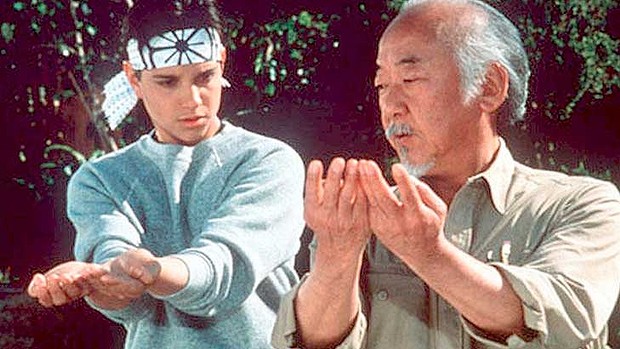5-second summary
Leadership styles, just like everything else, evolve over time.
So what’s your personal style? Do one of the “classic” leadership approaches resonate with you? Or do you find that a more modern leadership theory is a better fit?
Take our quiz to find out which of the traditional leadership styles you naturally gravitate toward. Then, refine your approach to leadership by stealing a few techniques from both the old-school and new-school leadership theories.
7 classic leadership styles: time-tested with clear pros and cons
1. Authoritarian/autocratic leadership style
This top-down style of leadership is based on the idea that the boss is the boss, and that’s that. If you’re a leader, you make all the decisions, hold all the power, and have little desire or need to gather team input on a day-to-day basis. Employees and teammates are just people who follow orders. It’s a dated approach to management that belongs more in a mobster movie than in the modern workplace.
Who has an autocratic leadership style?

Where it falls short: In just about every respect. Authoritarian structures foster stressful work environments because of their rigidity. People who work under autocratic leaders generally find themselves looking for new jobs before long. (Unless they’re a natural-born toady and/or complete and utter tool.)
What to do now: The best thing you can do for your team and your career is to ease the heck up. Yes, there’s a time and place for command-and-control leadership, but the modern workplace isn’t it. If you’ve adopted an authoritarian style because you figured it’s the only way to lead effectively, good news: it’s not! Today’s most effective leaders listen with open ears, give their team members as much autonomy as they can, and connect with their people as people (not just as direct reports). Sounds like a bunch of hand-wavy B.S.? It’s not. To start your leadership transformation journey, check out this article with five research-backed ways to become a more empathetic manager. You can also benefit from learning how legendary leaders embody seven proven leadership principles backed by science.
2. Bureaucratic leadership
As the cousin of the autocratic style, bureaucratic leadership runs on rules, policy, and maintaining the status quo. The standard procedure always wins out. Proponents of this style will listen to employees and may even acknowledge their good ideas, but if those ideas don’t fit within the established system, they’ll never get the green light.
Who has a bureaucratic leadership style?

Where it falls short: Because bureaucratic leadership is always beholden to business as usual, innovation is often stifled. This style of leadership is rarely effective in today’s workplace, especially if you want to actually, y’know, stand out in a competitive marketplace.
What to do now: The controlled environment you work in feels warm and cozy, but you can do your team (and yourself) a favor by venturing outside your comfort zone juuuuuuuuuust a bit. And that means *eep!* relinquishing some of that control, while still providing guardrails for your team. You may not be ready to let them go wild on a skunk-works project, but can you delegate more of the everyday decisions? Lend your support to a killer idea that happens to challenge the status quo? Check out these seven leadership secrets that can help you take your game from “ok” to “oh, wow!”
3. Democratic leadership style
The democratic approach to leadership relies on every team member providing input to help the team move towards the best decisions. The leader may still ultimately make the call, but it will likely be in sync with the conversations that have been happening across the team.
Who has a democratic leadership style?

Where it falls short: This approach is highly valued but requires members to be capable of participation. If leaders or employees aren’t active and engaged, it falls apart. Apathy is the enemy of democratic leadership. Another danger is that decisions can drag out for weeks (or months!) while you’re gathering input and building consensus.
What to do now: If your team is made of like-minded, self-motivated go-getters, then your leadership style is probably creating an environment where your people can thrive and just crush it every single day. Still, be mindful of decision-fatigue and consensus-fatigue. Check out one Atlassian team’s hack for making decisions as a group without getting bogged down.
If your team isn’t packed with self-starters, you may need to adjust your style to be a bit more directive. Or, better yet, try these five ways to nurture team morale and see if that results in higher engagement.
4. Coaching leadership style
Coach-style leaders look at their team members and see oodles of potential that can be unleashed and tapped into to help the company grow. As such, coaching leadership relies on your ability to connect your team’s capabilities to the right strategic opportunities. Chances are, you enjoy working with a wide variety of people and often make a massive positive impact.
Who has a coaching leadership style?

Where it falls short: While typically effective, the Achilles’ heel of coaching leadership is that it’s really tough to scale. Leaders simply don’t have unlimited bandwidth when it comes to developing their people and, at some point, the quality of your mentorship starts to go downhill. Additionally, the best decisions for your organization won’t always be the best decisions for individual people’s development, which adds some tension to the equation.
What to do now: Figure out how to coach your team members into taking a more proactive role in their own career development so that you don’t have to hold their hands so tightly. As a natural mentor, you already know what each person’s strengths and goals are. What initiatives are happening in adjacent departments or teams that they should stay on the pulse of? Who else around the company should they be talking to? You may also want to pass along this article that breaks down three essential skills for managing your own career development. Keep up the good work, coach!
5. Transformational/visionary leadership style
This is the style most-often revered in organizations that prioritize growth. Because you’re constantly challenging employees to not just meet, but exceed their goals, this leadership style requires dynamic communication skills to win people over to your vision of what’s possible – both for themselves and for the company.
Who has a transformational leadership style?

Where it falls short: Because visionary leaders are always tinkering and reworking the structures of the company, employees can suffer innovation fatigue. Also, employee development can fall by the wayside because the leader is always thinking about the Next Big Thing™. Not to mention that even the grandest ideas are meaningless if they’re not paired with action.
What to do now: While there’s nothing inherently wrong with a visionary leadership style (and a lot right with it), it’s not a perfect fit for every team or company. Sit back and have a good, hard, brutally honest think about whether it’s right for your environment. If you feel you’re on the right track, make sure you’re taking the concrete steps necessary to bring your vision to life and that you’re empowering your team members to do the same. (May we suggest the OKRs framework for working toward long-term goals?)
Otherwise, slow down for a bit and take stock. Are there foundational issues like technical debt, a backlog-gone-feral, or sagging morale that could use some attention? Taking some time to get back to basics gives everyone a chance to catch their breath and sets you up to put the pedal to the metal when the next irresistible idea comes along. Try the Team Health Monitor technique, developed right here at Atlassian through years of research and iteration. It’s a chance for your team to reflect on and discuss how you’re working together and identify weak areas before they become full-on liabilities.
6. Servant leadership style
The founding principles of servant leadership include nine behaviors:
- Serve first
- Add value to others
- Build trust
- Listen to understand
- Think about your thinking
- Increase your influence
- Demonstrate courage
- Live your values
- Live your transformation
In other words, you’re the type of leader who is focused on elevating their team members first, knowing that their success reflects well on you and that your own reward will follow. And, chances are, morale on your team is consistently high.
Who has a servant leadership style?

Where it falls short: Servant leadership can become a logistical drag. When quick, decisive action is called for, there probably won’t be time to listen deeply and build consensus across your team. It can also be difficult to find the right balance of developing your people and staying focused on your organization’s primary goals.
What to do now: Caring for your team members the way you do (namely, putting your own needs second) can be downright exhausting. Make sure you’re taking care of you, too. Check out this article to learn about the warning signs of burnout and get tips for preventing it.
7. Laissez-faire leadership style
This ultra-hands-off style of leadership is purely delegative, as it essentially transfers all authority to employees. You’re always there to hook them up with whatever resources they need, but then you let them run with it while you attend to other matters. This means your team members can take more ownership of their roles in creative ways, which can be sooooooo empowering.
Who has a laissez-faire leadership style?

Where it falls short: Lacking clear direction, group members are left wondering what their collective goals are and what’s expected of them as individuals. This will leave some people feeling like they’ve been cast adrift and disillusioned because they don’t have what they need to succeed.
What to do now: We need leaders to help us grow, answer questions, and provide at least a little bit of oversight. That doesn’t mean you have to go full-on control freak, though! (Seriously: don’t do that. Not that you would, but just sayin’.) The happy medium is to agree on guardrails with your team so that they can keep making decisions autonomously yet still be confident that they won’t go down the wrong path. With a specific project in mind, try this trade-offs exercise. It’ll get everyone on the same page regarding what to optimize for, how rigid to be about it, and what concessions might be involved.
Modern leadership styles: 2 evolving approaches to consider
1. Situational leadership style
This style of leadership is guided by a flexible-but-defined approach that relies on context. The leader adjusts their level of support and/or direction based on which of four developmental levels a team member falls into. Levels are determined based on the individual’s personality traits and levels of competence.
See “Is situational leadership the best leadership style?” to learn how to use this approach.
2. Mindful leadership style
Mindful leadership is an approach that requires a leader to consciously cultivate their ability to be present, open-minded, and compassionate when interacting with their team members. Using meditation, breath work, and the powers of observation, the leader seeks to silence the mind’s “busy mode” during team interactions in order to build strong interpersonal connections.





 )
) 






































